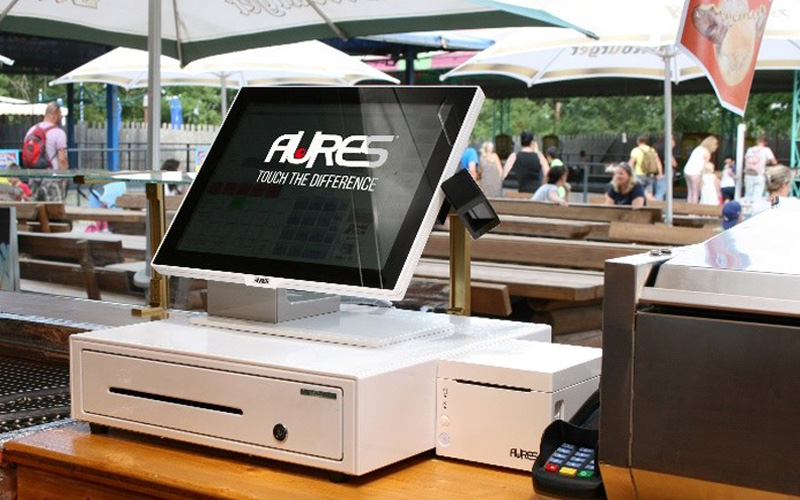Whether you’re a retailer, a restaurateur, a bar owner or an entertainment venue, point of sale (POS) plays a critical role in your business. After all, this is where you take your revenue, and any little glitch, any little inefficiency in how your POS operates can have a direct impact on your bottom line.
In fact, research suggests that slow, underperforming POS can lead to a 3% deficit in revenue each year. On the other hand, the best performing, optimised POS systems can add as much as 6% to your income through efficiency gains alone.
That makes POS performance something to take seriously. If something is not working the way you would like it, it’s probably costing you money!
Here are some of the best ways to avoid and fix poor POS performance to maximise your margins.
Get the right system
One of the things we see all the time when businesses come to us complaining that they are not getting what they expected from their POS is the wrong type of system being deployed for the wrong job.
POS comes in all different shapes and sizes. The needs of restaurants are very different to the needs of retail stores. Equally, the needs of big national chains are very different to the needs of a small local store. If you want your POS to perform at its best, you’ve got to start with the right system in the first place.
Common issues we see are larger businesses trying to run big networked POS systems using heavy hitting software through small, low-cost terminals that just don’t have the necessary processing juice. Inevitably, the system performs horribly.
But just as big of an issue is paying for things you don’t need, which can be a big drain on the resources of smaller businesses especially. Pick the wrong vendor without doing your homework, and you could easily end up being sold a whole bunch of stuff your little store or cafe doesn’t really need which then eats into your margins.
Similarly, we see so many businesses adopt things like mobile POS and self-serve kiosks simply because they’re the latest thing and they feel they have to have them. That’s a one-way ticket to wasting your money. Mobile POS and kiosks are fabulous tools that are transforming point of sale. But you have to have a good reason to use them and a clear strategy to make the investment work.
Installation and maintenance
When you get a little glitch with your POS system – you notice screen loads are starting to feel a little sluggish, payment processing has slowed down, whatever it may be – the truth is it could be caused by any one of a number of things. Modern POS systems are pretty complex.
Just like it pays to pick the right POS for your business in the first place, one of the best ways to avoid issues further down the line is to make sure it is installed right. There are all sorts of things that can go wrong at installation that will affect POS performance – faulty or poorly installed wires and cabling, compatibility issues between different types of hardware, corners being cut when it comes to configuring and testing software.
Again, getting this crucial stage right comes down to how carefully you choose your POS partner. You want a vendor whose credentials in installation and set-up match how slick their sales spiel sounds.
Similarly, we’d always advise customers to look for POS partners who offer comprehensive aftercare and maintenance packages. Things can and do go wrong with modern POS. The best way to tackle issues is through regular checks and pre-emptive maintenance. Plus, if you do experience a major failure, you want the reassurance of having a team of professionals behind you who will come out and fix any issues as per the terms of a clear service level agreement, rather than scrambling to find engineers when the problems become too major to ignore – and probably having to pay handsomely for the privilege.
Connectivity
Finally, although as we’ve mentioned little glitches and bugs in a POS system can have any number of causes, by far and away the most common is not actually to do with the POS itself – it’s to do with connectivity.
In the increasingly wireless world we live in, businesses understandably much prefer to have their POS systems networked via Wi-Fi rather than face the trouble of running (and hiding) long lengths of cable all over the place. But your standard workaday Wi-Fi router isn’t going to be able to handle the heavy traffic that modern cloud-based POS applications generate.
As more and more POS software gets migrated to the cloud, as businesses look to make their POS more agile and dynamic by introducing mobile consoles into their set up, it just becomes more and more important to have purpose built, dedicated Wi-Fi installed to support your POS.
Moreover, as well as strong, reliable connectivity, you’ve also got to make sure your wireless networks are secure. Cyber threats are escalating the more we rely on digitized, connected systems, and any vulnerability can have a big impact on your POS performance, as well as expose you to malicious attacks and costly data breaches.




